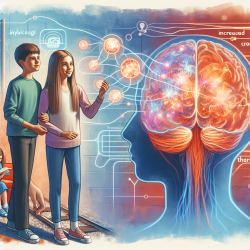Understanding Functional Connectivity in Adolescent Anorexia Nervosa
Recent research published in BMC Psychiatry has shed light on the complex interplay between functional connectivity and structural brain changes in adolescents with anorexia nervosa (AN). This study, titled Altered functional connectivity in adolescent anorexia nervosa is related to age and cortical thickness, explores how these changes can inform therapeutic approaches and improve outcomes for young patients.
Key Findings from the Study
The study involved 29 female inpatients with restrictive AN and 27 healthy controls, all aged between 12 to 18 years. Using independent component analysis (ICA), researchers identified significant differences in functional connectivity within the brain's networks, particularly involving the precuneus, hippocampus, and amygdala. These regions are crucial for cognitive functions and emotional regulation.
- Default Mode Network (DMN): AN patients showed decreased functional connectivity in the DMN, particularly in the precuneus, a region associated with self-referential thinking and body image perception.
- Subcortical Networks: The study found age-related differences in the connectivity of the hippocampus and amygdala, indicating disrupted development of these networks in AN patients.
- Structure-Function Relationship: A significant correlation was observed between cortical thickness in the precuneus and its functional connectivity, suggesting that structural brain changes influence functional alterations.
Implications for Practitioners
These findings have profound implications for practitioners working with adolescents with AN. Understanding the relationship between structural and functional brain changes can help tailor therapeutic approaches to better address the unique needs of these patients.
Practitioners can consider the following strategies:
- Targeted Cognitive Interventions: Given the involvement of the DMN and precuneus in body image perception, cognitive-behavioral therapies that focus on altering self-referential thinking and improving body image could be particularly effective.
- Developmental Considerations: The age-related differences in subcortical network connectivity suggest that therapy should be adapted to the developmental stage of the patient, potentially incorporating age-appropriate strategies that support normal brain development.
- Multidisciplinary Approach: Collaboration with neurologists and psychologists can provide a comprehensive understanding of the patient's brain structure and function, leading to more personalized and effective treatment plans.
Encouraging Further Research
While this study provides valuable insights, it also highlights the need for further research to fully understand the implications of these findings. Future studies could explore the longitudinal effects of therapeutic interventions on brain connectivity and structure, as well as the potential role of hormonal and nutritional factors in influencing these changes.
For practitioners interested in diving deeper into this topic, accessing the full research paper will provide a more comprehensive understanding of the methodologies and detailed findings. Read the original research paper here.
By staying informed and leveraging the latest research, practitioners can enhance their skills and ultimately improve outcomes for adolescents struggling with anorexia nervosa.










